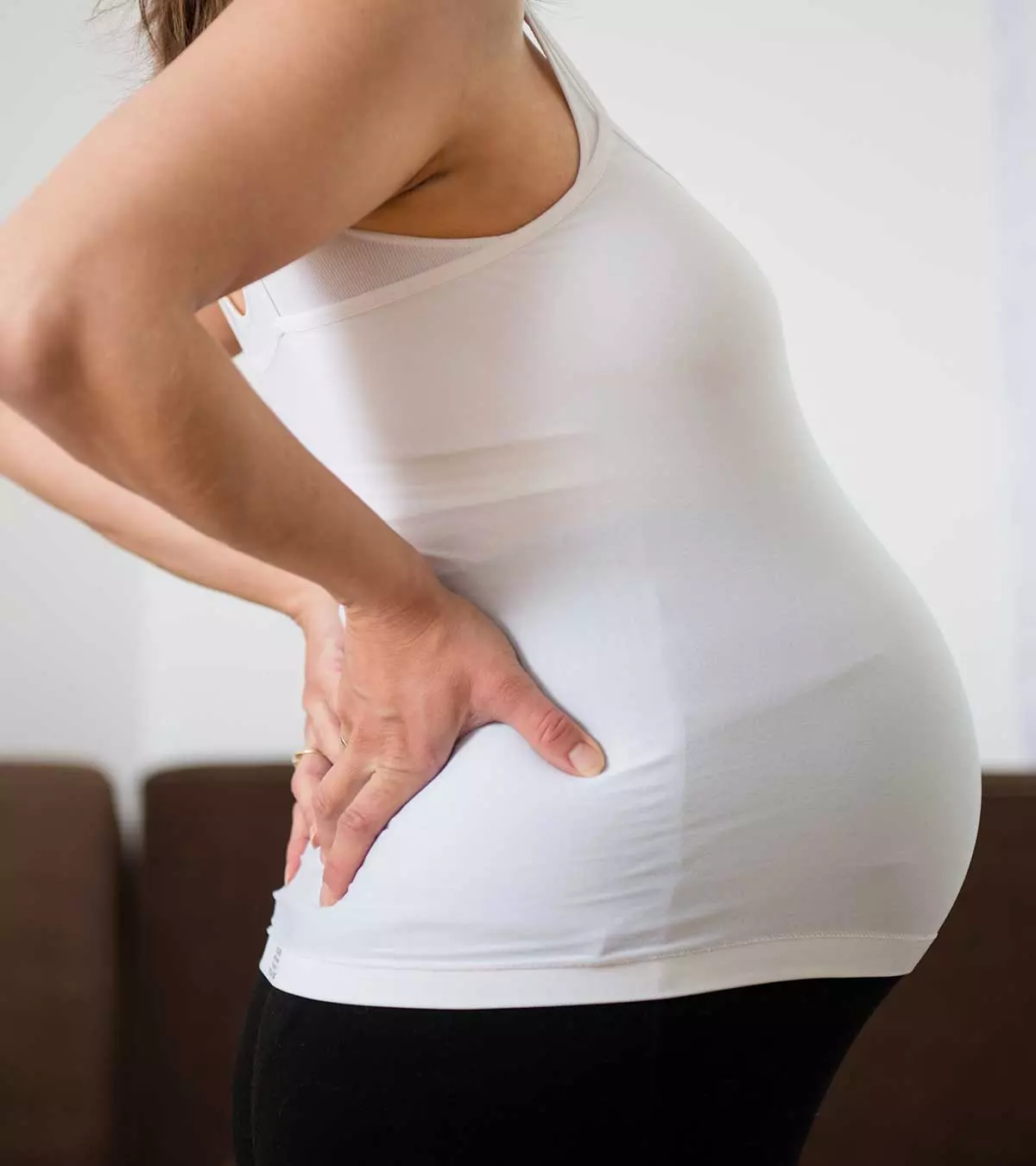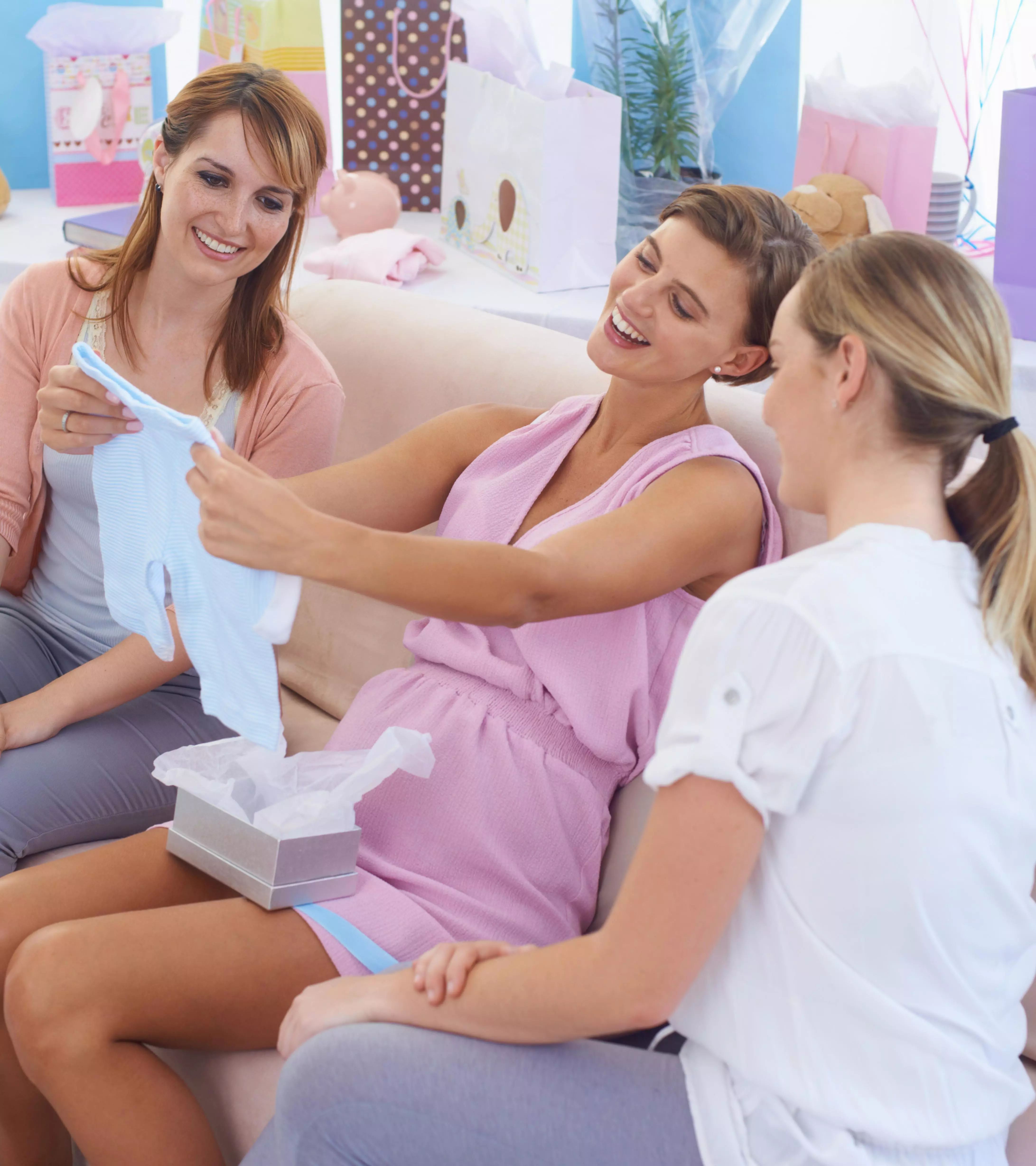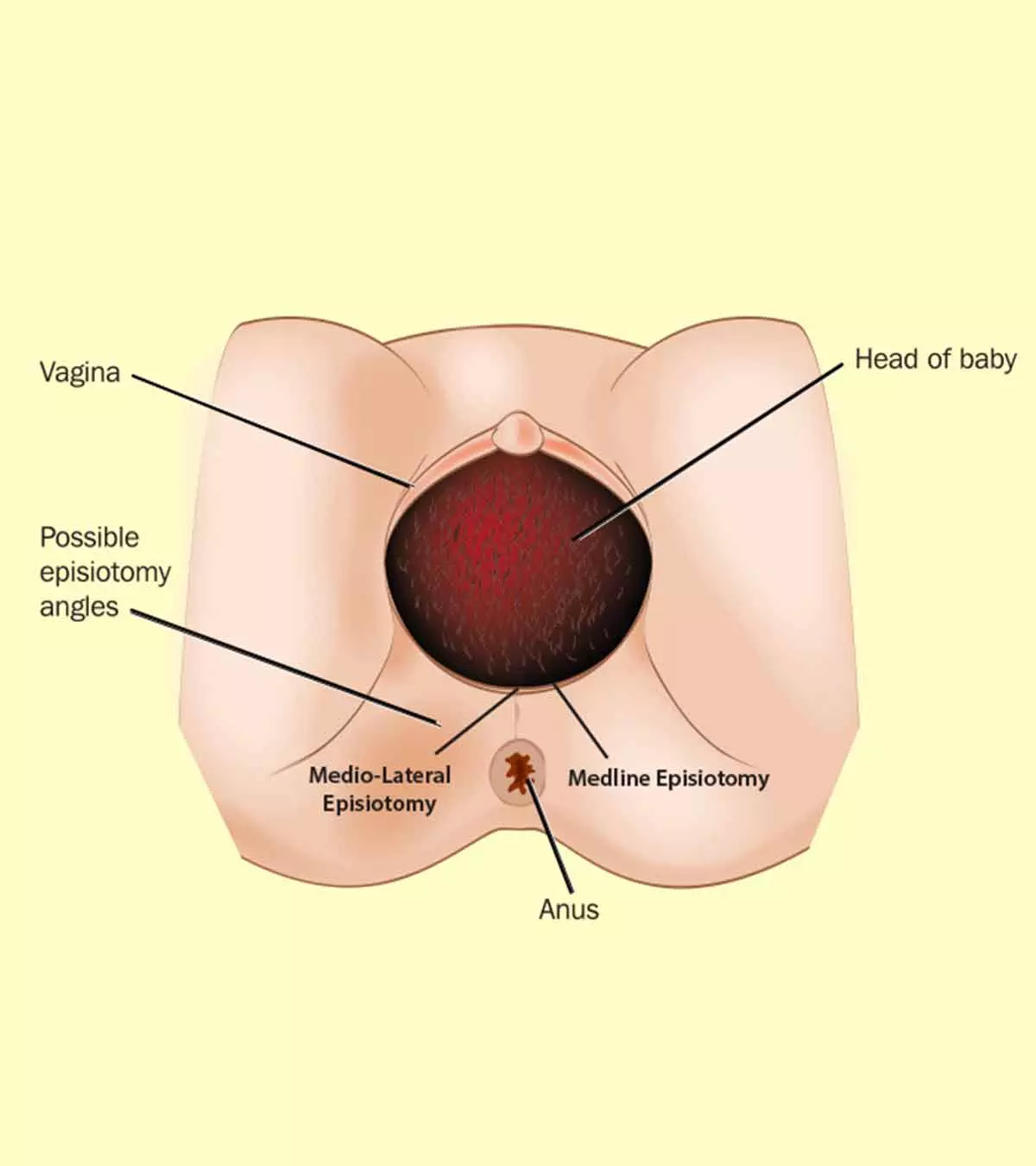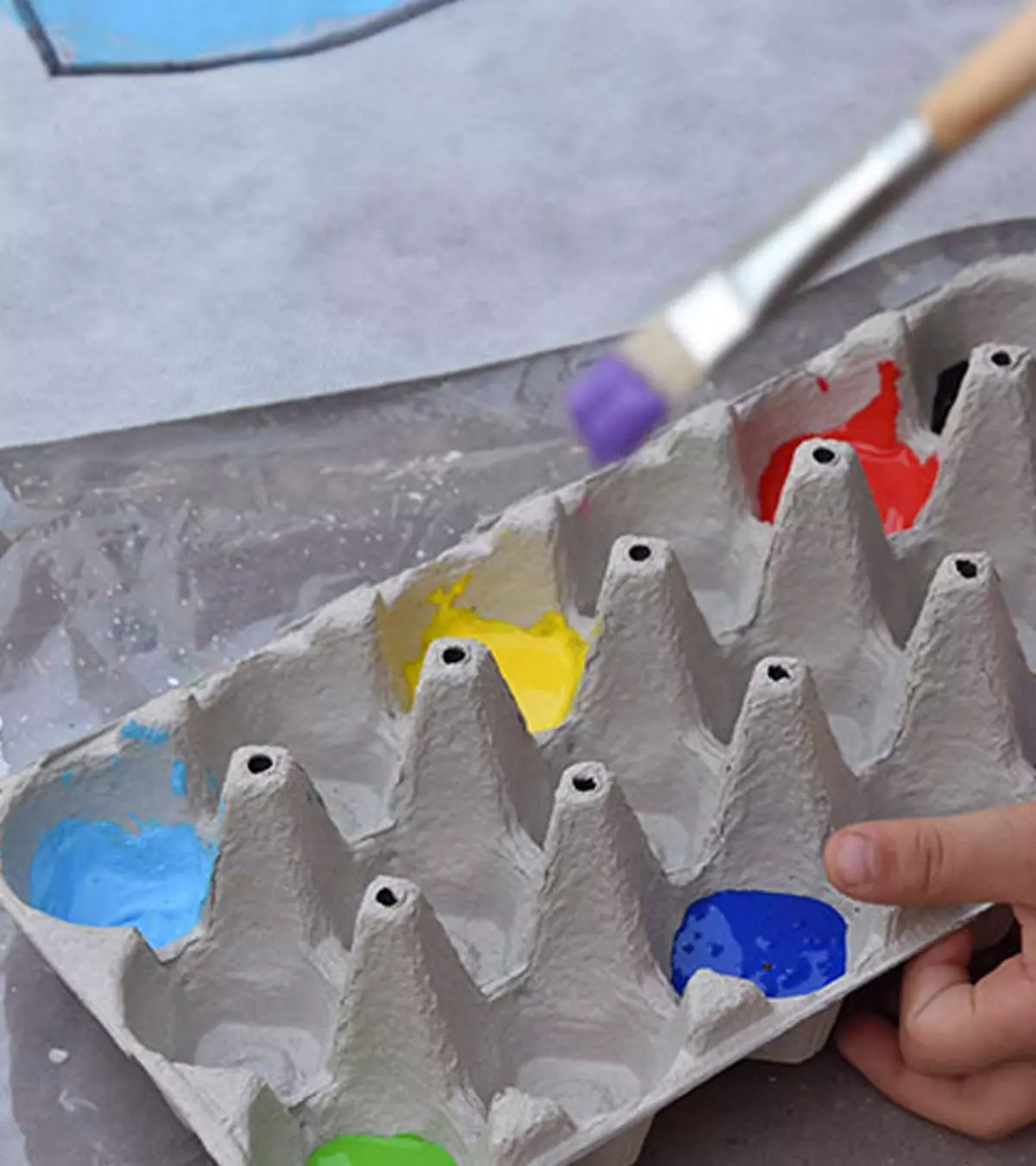

Image: Shutterstock
Childbirth is a natural physiological process that alters a woman’s body in a variety of ways. Therefore, the body may take days or even weeks for complete recovery after birth and return to normalcy. Whether you had a simple or complicated delivery, vaginal or cesarean (C-section) birth, or the labor lasted a few hours to a few days, the overall healing process after birth is the same, and your body requires time to recuperate. In this post, we explain postpartum healing and also discuss some points that may help you prepare for your postpartum period.
How Long Does It Take To Recover After Giving Birth?
It takes around six to eight weeks for initial recovery after childbirth (1). For some, it may even take longer. No matter how you gave birth, your body would have undergone significant stress and stretching and requires time to recover.
What To Expect During Postpartum Recovery?
During the childbirth process, your body will undergo many changes ranging from normal to unusual. Whether it is vaginal or cesarean delivery, you can expect the following physical and emotional changes postpartum (2) (3).
Physically, you may experience
- Constipation: You will have trouble passing stools after your delivery. Probably, the first bowel movement will happen two to three days after the child’s birth. It may be due to the pain medications during labor, healing stitches, painful hemorrhoids or sore muscles.
- Sore breasts: Your breasts will get ready, even before childbirth, to produce milk that your baby needs. They may become painfully engorged for many days and the breasts and nipples turn sore.
- Hemorrhoids: They are swollen blood vessels in the rectal or anal region that cause pain and bleeding with passing stool. Sometimes, they develop during the pregnancy, or from the strain due to all that pushing during delivery.
- Vaginal soreness: During labor, the perineal region (the area between anus and vagina) will stretch, possibly tear, and hurt. The soreness worsens in case of episiotomy (a surgical incision made in the perineal region to enlarge the vaginal opening for the baby to be delivered). It is then repaired with stitches that may take a couple of weeks to heal. The sutures may cause vaginal pain while sitting, walking, coughing, or sneezing.
- Abdominal pain: As your uterus returns to its normal size post-delivery, you will experience a dull or sometimes sharp pain in your abdomen. You may also feel cramping while breastfeeding your baby. The reason is that breastfeeding stimulates the production of a chemical, which causes contraction of the uterus.
- Vaginal discharge (lochia): After delivery, your body eliminates the extra blood and tissue used for nourishing the growing baby. Heavy bleeding would occur in the first ten days, followed by light spotting lasting up to six weeks.
- Weight loss: You might lose around six to 12 pounds (depends on your baby’s size) during childbirth. After that, there will be a gradual weight loss over the next few months. Breastfeeding also promotes weight loss in some new mothers while in some others it does not have any effect.
- Water retention: The swelling you might have had during pregnancy may take some time to subside. Also known as postpartum edema, your body will continue to stay swollen due to the increased progesterone hormone. You will experience swelling of hands, feet, and legs, which will last no longer than a week.
- Hair and skin changes: Your hair may thin around six months after birth. It will happen due to the fluctuating hormonal levels. During pregnancy, estrogen levels are so high that they cause faster hair growth and lesser hair fall (prolonged anagen phase). After delivery, estrogen levels fall, and the hair growth cycles into the resting phase, resulting in increased hair loss. You will also notice purple or red stretch marks on the abdomen and breasts. They will fade gradually but may not disappear completely.
Emotionally, you may experience:
- Baby blues: You may feel anxious, overwhelmed, restless, irritable, and sad for around one to two weeks after birth. These emotions are very common due to the physical changes and emotional adjustment you have to deal with as a new mom.
- Postpartum depression: If the baby blues are severe and last longer than two weeks, it is a sign of postpartum depression. It might develop anytime within the first year after delivery, especially in women with a history of depression and multiple life stressors.
If you experience any unusual changes, such as severe pain and soreness, go to the doctor as soon as possible. Never ignore your health even if you feel overwhelmed with infant care.
Postpartum Recovery Tips
Here are a few tips you can follow to hasten your recovery after childbirth (4) (3).
- Care for perineum: Cleanse the perineal region with warm salted water after urinating or passing stools. Keep the area dry and change your sanitary pad every four to six hours to avoid irritation and infections. Use warm compresses or try warm sitz baths to ease pain and promote healing.
- Keep C-section incision clean: Clean and dry the cesarean incision at least once a day once the stitches have been removed. Apply antibiotic cream as prescribed by your doctor. Avoid carrying heavy loads and vigorous exercises for some time.
- Ease pains and aches: Treat yourself with a hot compress or hot water showers, or a massage to ease the overall pain.
- Follow a routine: Your first bowel movement might happen two to three days after childbirth, but you should not force things. Include more fiber-rich foods (fruits, vegetables, and whole grains), take a stroll and use mild stool softeners. Do not strain as it is not good for the C-section scar or perineal tear.
- Include Kegels: Try pelvic floor exercises to stimulate circulation in the cervical area and ease healing. These exercises help in getting your vagina back in shape, reviving your sex life, and resolving urinary incontinence.
- Pay attention to breasts: Gentle massage and cold or warm compresses can bring relief to achy breasts. Wear a comfortable nursing bra to air dry your breasts after each nursing session. Apply lanolin to treat cracked nipples.
- Follow a healthy diet: A combination of carbs and protein (such as whole wheat toasts with peanut butter, whole grain crackers, veggies with hummus, and hard cheeses). Drink about eight glasses of water every day. Quit caffeine and alcohol as they might disturb your sleep pattern and affect your mood.
- Rest well: Take as much rest as possible during the first week after delivery. Do not focus on many tasks other than taking care of the baby. Let others in the family take care of cooking, cleaning, and other errands. You can also hire a doula or supportive companion to help with postpartum care.
- Sleep more: You will experience interrupted periods of sleep in the night, for which you should take naps during the daytime. Try to get as much sleep as possible when your baby is also sleeping.
Recovery After Birth — Checklist
Here is a list of a few things you may need to make your recovery smooth and quick.
- Maxi pads that may last for a couple of weeks
- Acetaminophen to help with overall aches and perineal pain
- Standard ice packs to avoid frostbites
- Witch hazel pads to treat hemorrhoids and ease vaginal pain
- Squirt or peri bottle to rinse off the perineal region
- Sitz bath tubs for relief from postpartum pain
- Nursing bras and cotton underpants for comfort
- Lanolin cream for treating cracked nipples
- Stool softeners to deal with constipation
- Lidocaine spray for postpartum hemorrhoids
- Heating pads to relieve breast pain and soreness
- Postpartum recovery belt to help belly regain its original size
If you think that the recovery process is not going as smoothly as it should be, talk to your doctor.
When To See Your Doctor?
You should have an appointment with the doctor around six weeks after delivery. There will be an examination of the vagina, uterus, and cervix, along with blood pressure and weight. You may also continue your sexual life if all the reports are positive.
Also, let your doctor know if you experience any of the following postnatal symptoms (3):
- Severe vaginal bleeding that needs you to change more than one pad in an hour
- Fever or chills with a temperature of above 100.4°F
- A persistent headache and vision changes
- Dizziness or fainting
- Difficulty urinating
- Foul smelling vaginal discharge
- Chest pain and heart palpitations or shortness of breath
- Increasing abdominal pain
- Sore and tender breasts
- An incision from episiotomy or C-section becoming swollen or red
- Swelling and pain in your legs
Keep reading for answers to a few commonly asked questions about recovering after childbirth.
Frequently Asked Questions
1. How long does it take for the stitches to heal after birth?
It might take two to three weeks for the stitches to heal after delivery. However, it may not be the same with every new mother (5).
2. When can I take a bath after giving birth?
You can take a bath whenever you feel like it after vaginal delivery. A bath is known to stimulate the healing processes immediately. But in the case of cesarean delivery, you may have to wait until the incisions are healed properly or ensure the wound dressings are waterproof first.
3. Is it necessary to take bed rest after delivery?
Yes, taking bed rest post delivery is necessary for recovery. Rest as much as you can at least for the initial six weeks, as you may not have enough energy to do much. Try to include short walks and moderate exercises since staying inactive for a longer time may cause muscle weakness.
4. How soon can you leave the hospital after giving birth?
It depends on whether you have had a vaginal or cesarean birth. If it was a vaginal delivery, you will be leaving the hospital within 24 to 48 hours. In case of a cesarean, you will be leaving in one to four days (6).
5. How long does it take for your stomach to go in after having a baby?
Although you will lose most of the bump immediately after delivery, it might take six to eight weeks for the stomach to return to its original size.
6. How do you know when stitches are infected?
If stitches are infected, you may notice redness and swelling around them. The wound site becomes tender, and you may also develop a fever.
Since childbirth is a normal process and not an illness, your body is programmed to heal it normally, in time. Remember a few days of discomfort is normal and will be overshadowed by the joys of a newborn with you.
The process of childbirth puts your body under stress, despite any mode of delivery. Therefore your body would take some time to recover after birth. You may experience several discomforts such as hair changes, vaginal pain, irritation in breasts, or gastrointestinal issues after delivery. Even psychological issues such as depression and irritability are common after delivery. Healing after childbirth and adjusting to the new norm will take some time. Hence, seek help if you want to. Alternatively, try to maintain a routine, maintain proper personal and food hygiene, sleep well, and consume healthy foods to help you recover better.
References
1. What to Know After Having Your Baby; University of New Mexico (UNM) Hospitals
2. Common Conditions; University of Rochester Medical Center Rochester (2018)
3. A Guide to Postpartum Recovery & Newborn Care; Greater Baltimore Medical Center
4. The New Mother – Taking Care of Yourself After Birth; The Children’s Hospital of Philadelphia (2018)
5. Caring for Yourself After the Loss of Your Baby; University of Washington Medical Center (2008)
6. Postpartum Care; UC San Diego Health (2018)
Community Experiences
Join the conversation and become a part of our nurturing community! Share your stories, experiences, and insights to connect with fellow parents.
Read full bio of Dr. Ben Abbes Taarji Hicham
Read full bio of Rebecca Malachi



















